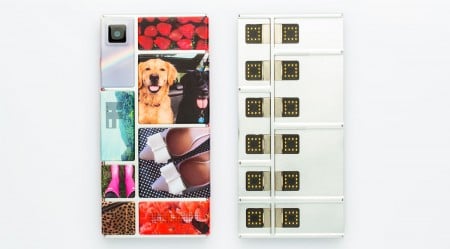For some of us, phone upgrades are a constant exercise, with a new product landing in our hands every year, or two, or three. But a project from Google could mean updates are quick, frequent, and easy.
The concept is called “Project Ara”, and it’s an idea that picks up from a project Motorola started when Google owned the company.
A little over a year ago, an idea surfaced of making a phone that could be assembled like blocks, with modules for a screen, a camera, a 4G modem, and so on, with all of these parts removable and replaceable, meaning if you wanted to update your 8 megapixel camera to a newer 13 megapixel one, you could, simply by removing your old camera and snapping in a new module.
The same sort of thing would happen with the screen, and if you broke it — like so many people do with phones — you could just snap it out and throw a new one in.
Voila. New screen. Forget taking it to a specialist or repairer, as you could do it yourself.

Project Ara would use a frame with modular sections for you to snap things in, making it a phone that you could control, with choices for camera, battery size, and more, with the sky being the limit.
You could have a new phone simply by taking out one part and adding another, updating your product on a regular basis as opposed to once every two or three years.
This week, Google has shown Ara through a new prototype, called the “Spiral 2” which uses a metal frame with magnets to hold in the modules, with a few variants of these.

We’re checking with Google to see when we can go hands-on with the Ara for ourselves, but it’s probably a fair way off for Australia, with Google running a test program for the gadget in Puerto Rico first.
Unfortunately, that means consumers won’t likely see the modular phone for themselves until late this year or early next, but it is coming, and it looks very, very interesting.
UPDATE (1:02pm): Google has given a bunch of images to show how it works, so we’ve added them in a gallery above, leaving the video below in case you want to see the idea in action.


























